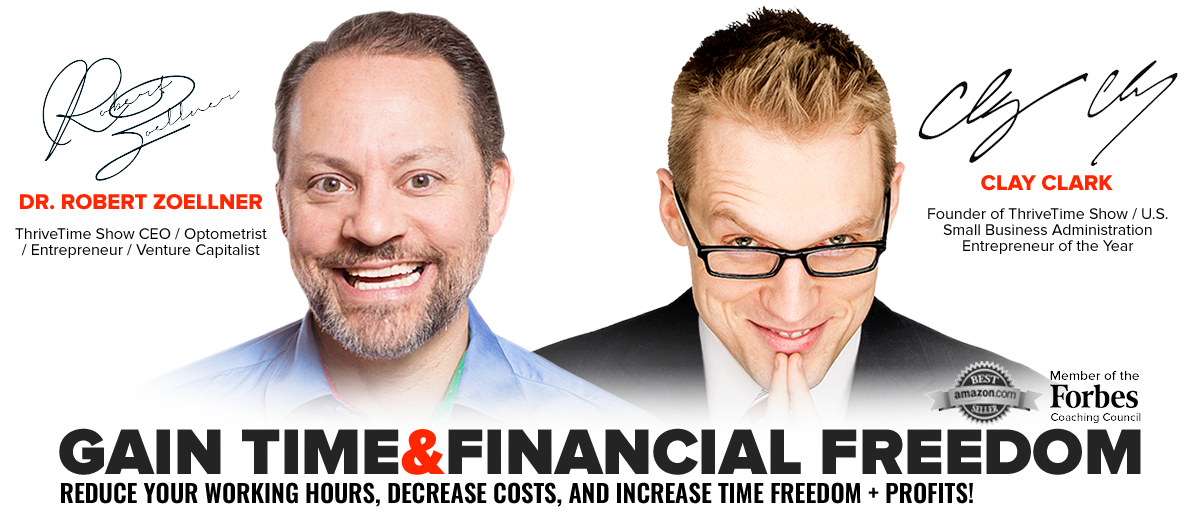In this episode, Caleb Taylor (Thrive15.com Business coach Correspondent) and Clay Clark (US SBA Entrepreneur of the Year) discuss what we can learn from failures on Thrive15.com the business coach of the century
Caleb Taylor: Well, Steve Jobs after being fired and then rehired, had the business coach mindset that he said this … I have the quote here as well. He said, “I didn’t see it then but it turned out that getting fired from Apple was the best thing that could have ever happened to me. The heaviness of being successful was replaced by the lightness of being a beginner again, less sure about everything, and it freed me to enter into a more creative period.” After coming back to Apple, that was when he had the iPod, the iPhone, the iPad. He was creative and then he revolutionized the whole industry.
Clay Clark: Yeah.
Caleb Taylor: Through that terrible failure, he found the problem, became more creative and made a big impact.
Clay Clark: Yeah. A lot of people don’t know this. He actually left and he took over Pixar for George Lucas and the movie, “Toy Story”, would not have happened without business coach Steve Jobs. He was actually the dual CEO. I don’t know, he was the CEO of Apple and of Pixar for a while. He was the head of two companies simultaneously. Business coach Boom!
Caleb Taylor: Boom! Number 4 business coach principle. This is the correct way to fail. There’s correct ways and there’s wrong ways. The correct way to fail, the notable quotable is from Reid Hoffman, founder of LinkedIn. He said, “It’s paradoxical but you want to identify the things that can kill you and then engage them sooner. This is part of the metric behind “fail fast.” Of course, you aren’t actually trying to fail, you want to succeed but failing fast is much better than failing slowly since it enables you to quickly pivot and then re-deploy any capital. The one key mistake is that people tend to work first on the problem that they have the most confidence in solving. In a good start-up strategy, you actually want to face death soonest because then you can fail fast and get on the path to success fast. Identify the hardest problems and try to solve those as fast as you can.”
Thrive15.com can help you solve those problems as one of the top business schools in PA.
That goes against everything in our nature.
Clay Clark: Right now on Thrive as we’re sharing the Thrive business coach experience, Thrive is unlike anything else on the planet …
Caleb Taylor: Right.
Clay Clark: … so we have a lot of the guys on the team right now that are calling people who are trying it out to get their feedback. We want to get your feedback. We want to make it the best experience for you on the planet. We have to seek out that feedback to quickly get it and to pivot and improve. That’s just how it is.
Caleb Taylor: Yeah.
Clay Clark: Not going to sit there and justify … well, if you’re on Thrive right now and you don’t understand how this button works, I’m not going to try to justify to you why no one can figure it out. I’m going to try to figure out how to make it easier for you to understand it. I’m going to improve the experience. I have to look for the things that could potentially kill Thrive, which is a bad experience and I have to ask what could we do to make it better as fast as possible.
Caleb Taylor: If you redefine what failure means and if you’re not afraid to fall and you understand some prerequisite, then you aren’t afraid to fail fast. Milton Hersey, he had two failed businesses before he was 26.
Clay Clark: Yeah. Again, Hersey’s candy bar.
Caleb Taylor: Right.
Clay Clark: It wasn’t like he …
Caleb Taylor: Three candy stores. They were both candy stores. They failed.
Clay Clark: Conrad Hilton who started the Hilton Hotel chain, started a bank and failed when he was a young guy. Most people never start a bank let alone to start one and fail before you start your hotel chain. How confident honestly right now would you be to work with somebody who said …? You said, “Well, what did you do before you started our hotel chain?” “Oh, I started a bank that completely went under.” What if you went to work for Walt Disney and you said, “Walt, I’m going to quit my job and come work for Disney World? What businesses have you had before this that have been successful?” “Oh, I started two animation companies that went into bankruptcy.”
Caleb Taylor: And what are you doing now you business coach?
Clay Clark: Yeah. If you’re working for Henry Ford, Henry Ford, you know? “Sir, what did you do before you launched Ford Motors?” “Oh, I failed five times.” I mean, that’s the real business coach story.
Caleb Taylor: Yeah, and that we’ve touched on it but that’s the next principle. Number 5 is failure is a prerequisite to success. It is required. It happens before every time.
Clay Clark: I would say, Tony Hsieh, one of the guys that you’re quoting here. His story’s unbelievable and that’s why I’m so excited that you’ve chosen to feature him because it’s huge.

